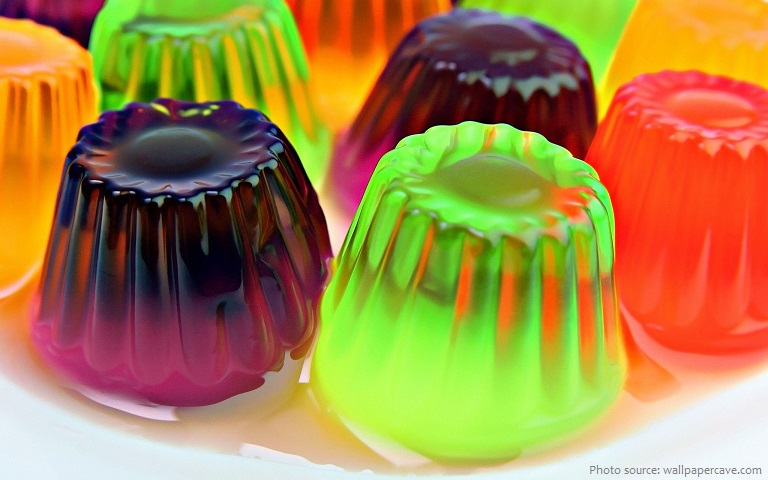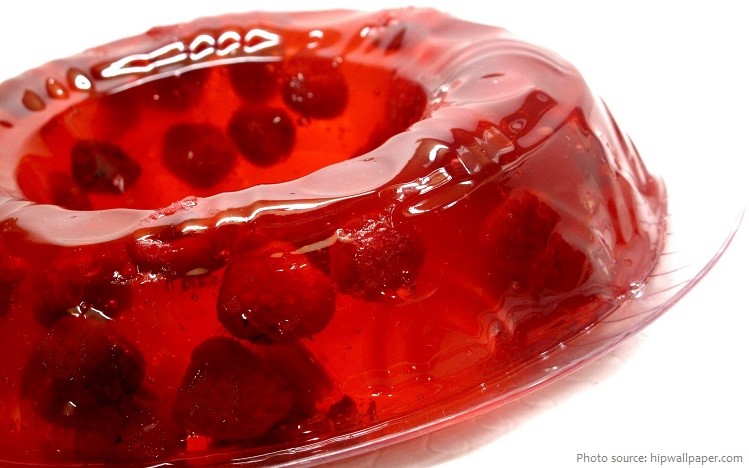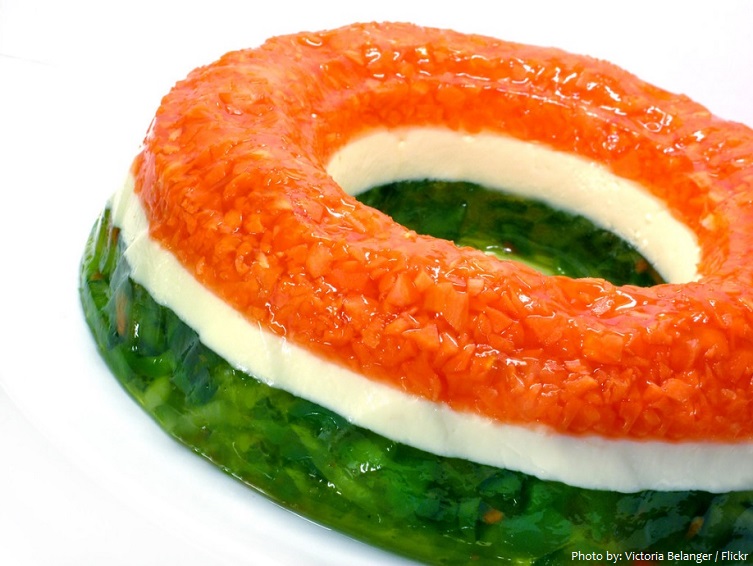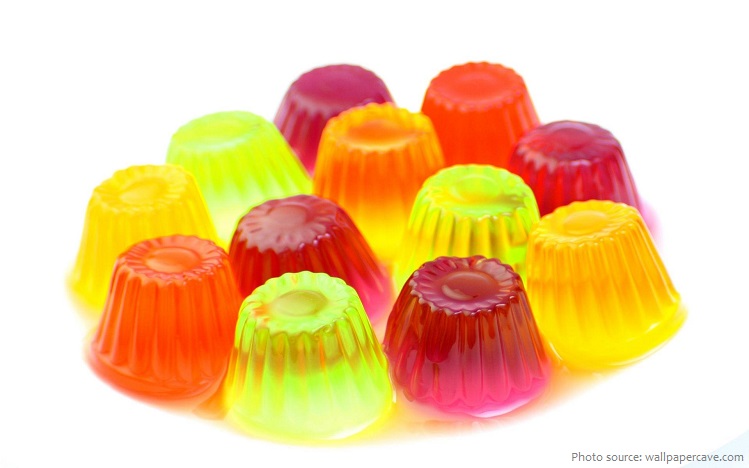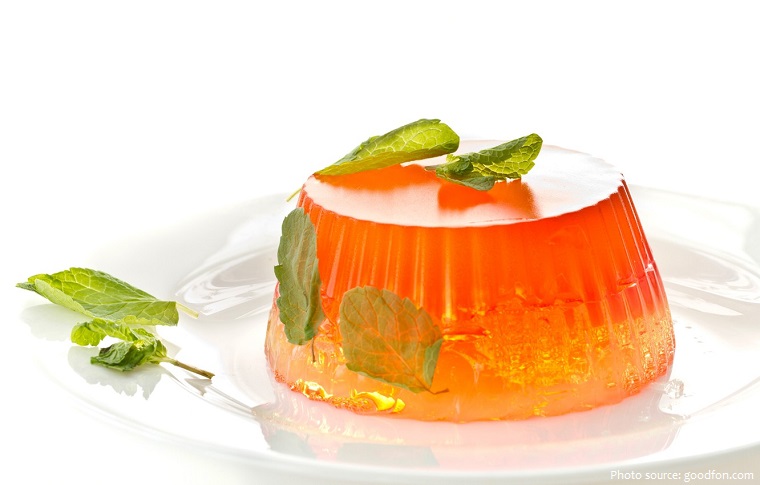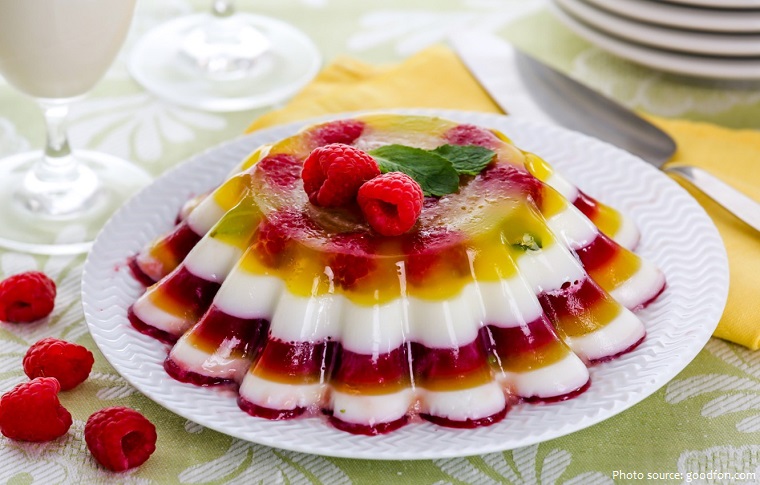Jell-O is a variety of gelatin desserts, puddings, and no-bake cream pies.
The original Jell-O gelatin dessert is the signature of the brand.
Jell-O is sold prepared (ready-to-eat), or in powder form, and is available in various colors and flavors. The powder contains powdered gelatin and flavorings, including sugar or artificial sweeteners. It is dissolved in hot water, then chilled and allowed to set.
Fruit, vegetables, and whipped cream can be added to make elaborate snacks that can be molded into shapes. Jell-O is typically put in a refrigerator to set (become firm), after which it is eaten.
Fresh pineapple, papaya, kiwifruit, and ginger root cannot be used because they contain enzymes that prevent gelatin from “setting”.
Jell-O is used as a substantial ingredient in a well-known dessert, a “Jell-O mold” the preparation of which requires a mold designed to hold gelatin, and the depositing of small quantities of chopped fruit, nuts, and other ingredients before it hardens to its typical form.
Jello salad is a salad made with flavored gelatin, fruit, and sometimes grated carrots or (more rarely) other vegetables. Other ingredients may include cottage cheese, cream cheese, marshmallows, nuts, or pretzels. Jello salads were popular in the 1960s and are now considered retro.
An alternative recipe calls for the addition of an alcoholic beverage to the mix, contributing approximately one third to one half of the liquid added after the gelatin has dissolved in a boil. A
serving of the resulting mixture is called a “Jell-O shot” at parties.
Gelatin, a protein produced from collagen extracted from boiled bones, connective tissues, and other animal products, has been a component of food, particularly desserts, since the 15th century.
Gelatin was popularized in New York in the Victorian era with spectacular and complex jelly moulds. Gelatin was sold in sheets and had to be purified, which was time-consuming. Gelatin desserts were the province of royalty and the relatively well-to-do.
In 1845, a patent for powdered gelatin was obtained by industrialist Peter Cooper, who built the first American steam-powered locomotive, the Tom Thumb. This powdered gelatin was easy to manufacture and easier to use in cooking.
In 1897, in LeRoy, New York, carpenter and cough syrup manufacturer Pearle Bixby Wait trademarked a gelatin dessert called Jell-O. His wife May and he added strawberry, raspberry, orange, and lemon flavoring to granulated gelatin and sugar.
The name “Jell-O” was the work of May Wait, and she apparently used both the words “jelly” and “gelatin” as inspiration for the “Jell” part of the name. She tacked the “O” on because it was trendy, and also an easy way to trademark a well-known word.
Because of low sales, Wait sold the patent to Orator Francis Woodward in 1899 for $450. Woodward began his first advertising campaign in 1902, making Jell-O, manufactured by the Genesee Pure Food Company of Leroy, New York, a worthy contender with Knox, Cox, Plymouth Rock, and other instant gelatins on the market at the time.
By 1930, there appeared a vogue in American cuisine for congealed salads, and the company introduced lime-flavored Jell-O to complement the add-ins that cooks across the country were combining in these aspics and salads. Popular Jell-O recipes often included ingredients like cabbage, celery, green peppers, and even cooked pasta.
The Jell-O gelatin dessert was especially popular in the 1930s and 1950s.
In 1992, Ivette Bassa won the second ever Ig Nobel Prize (a satiric prize) award in chemistry for inventing blue Jell-O.
Everyone loves Jell-O, but not as much as Utah does. Jell-O is the official state snack of Utah, and when Salt Lake City hosted the 2002 Winter Olympics, Jell-O was immortalized in one of theircollectible pins.
The Jell-O Gallery or Jell-O Museum is a museum in Le Roy, New York dedicated to exhibits about Jell-O. The museum is owned and operated by the Le Roy Historical Society.
